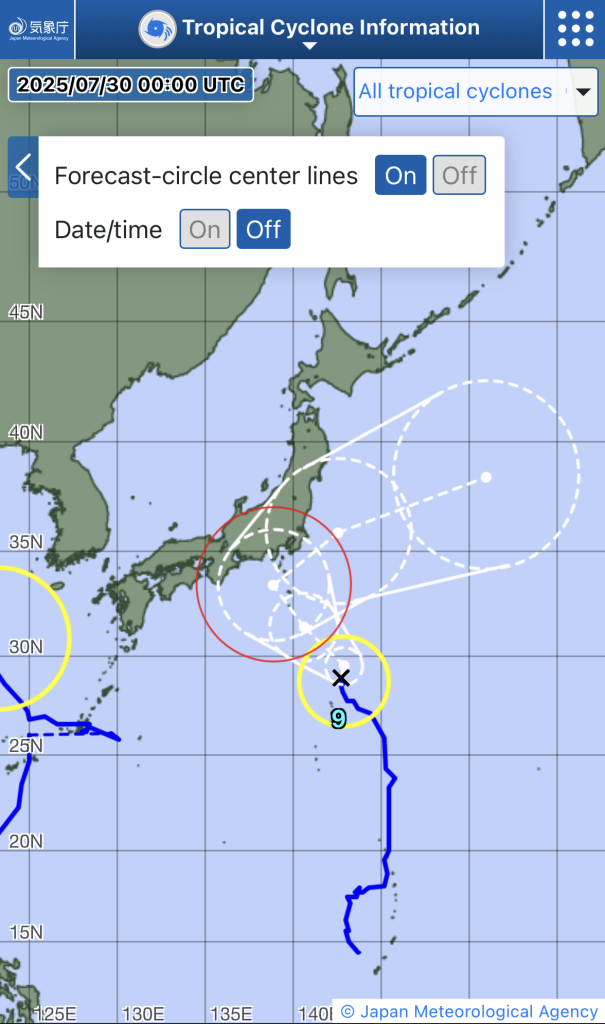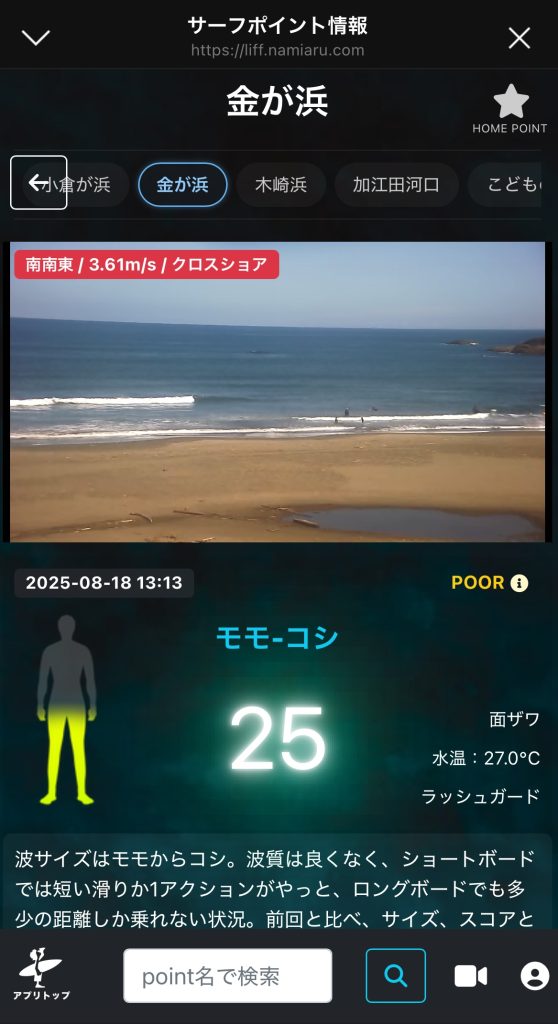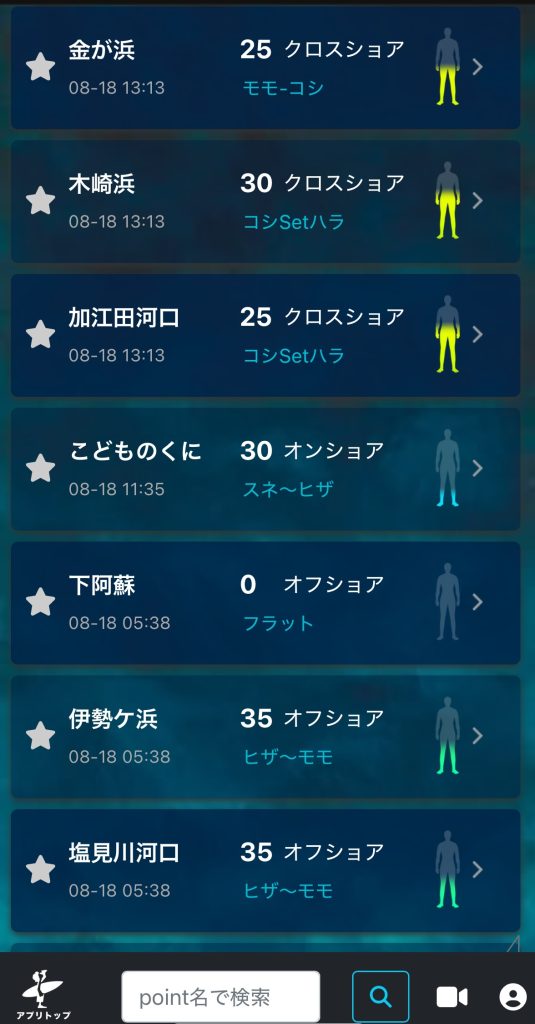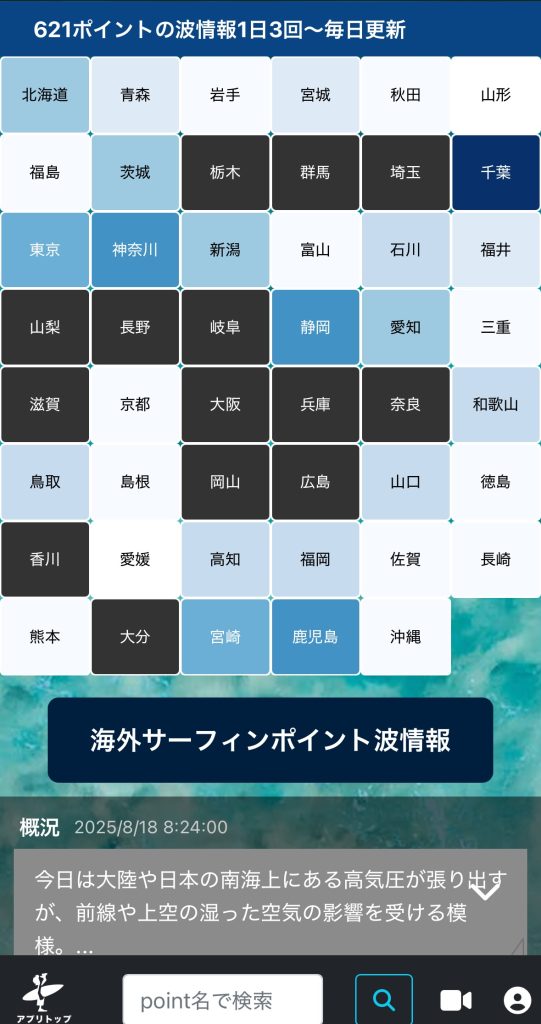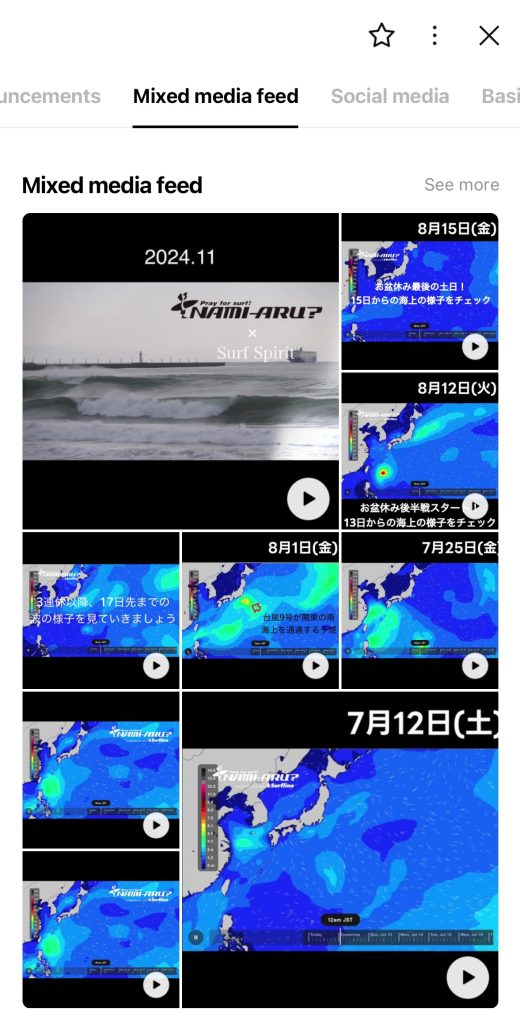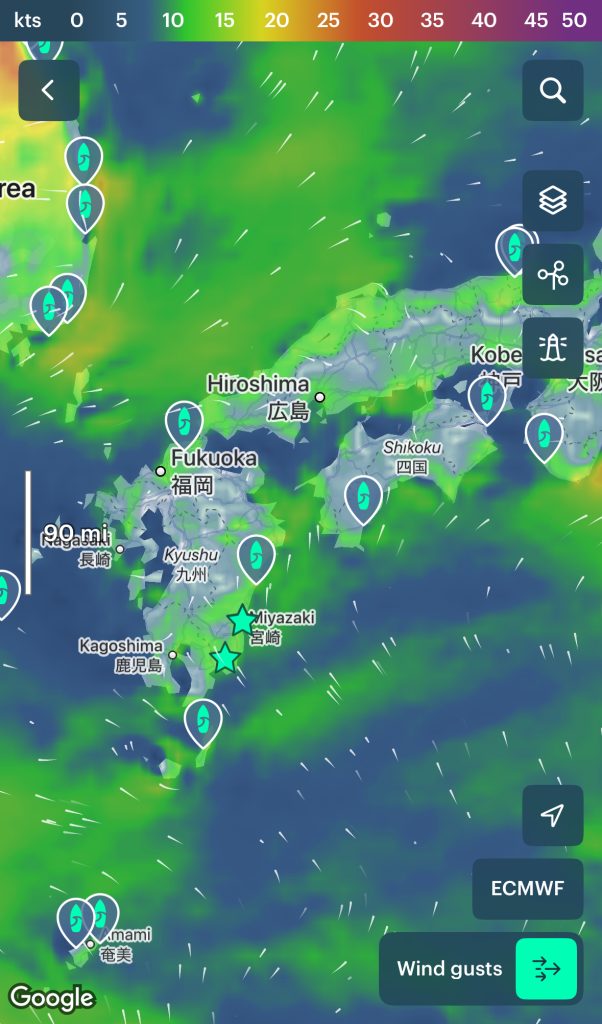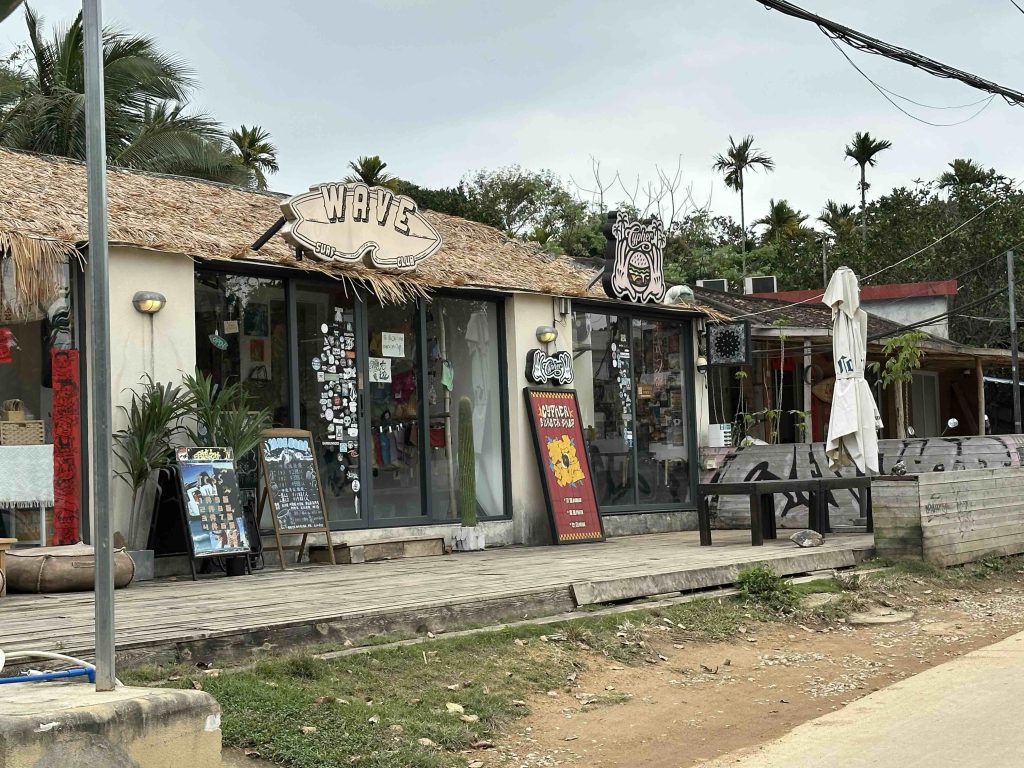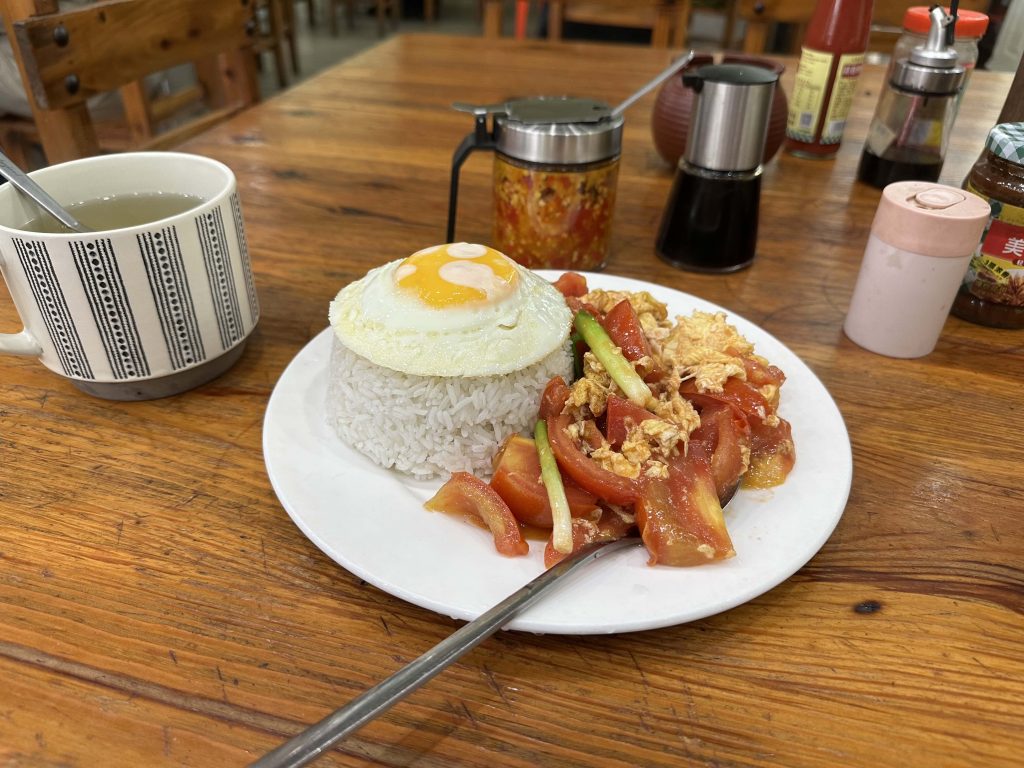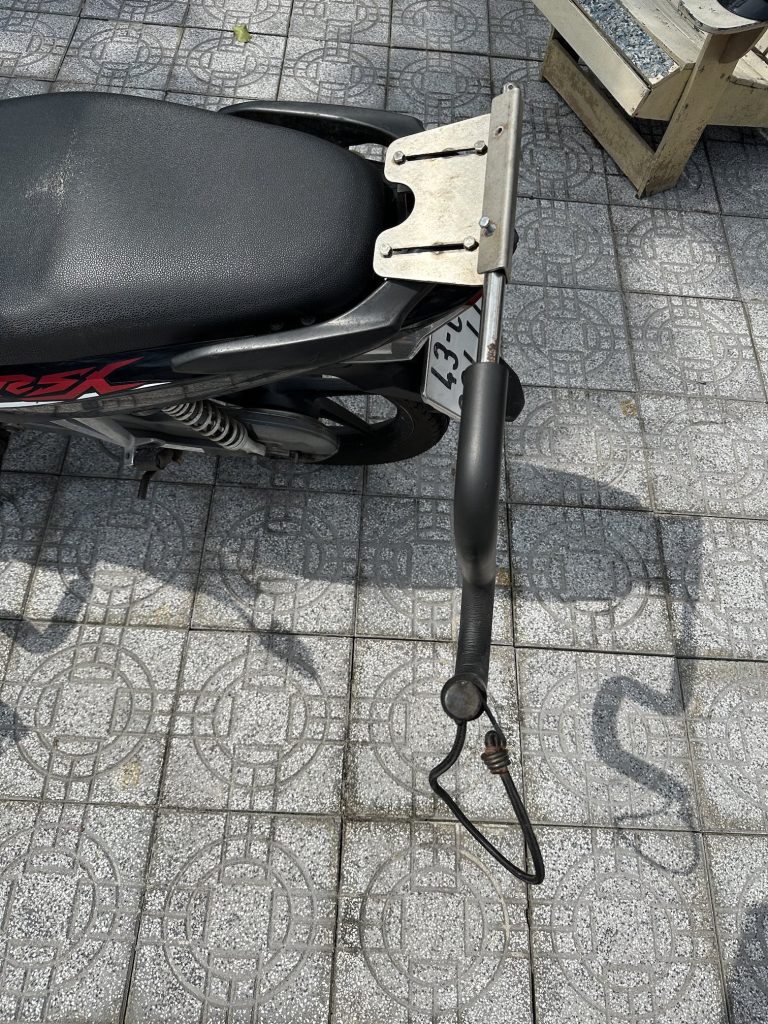Chasing waves through Miyazaki, Japan in a surf van is one of the better short-term surf adventures I’ve had. I consistently had fun waves with low crowds and saw a side of Japan most tourists don’t access.
If you’re interested in taking a surf trip to Japan, my experience will help give you a better idea of what to expect. I’ve included tips and recommendations from my learnings which I hope will make your trip even better.
My Experience
TLDR: Wave quality was good but not mindblowing and surf was consistent. The total experience was great. I recommend it because of fun surf and great sightseeing in-between (if you like hiking and the countryside of Japan).
General Takeaway
The freedom and flexibility of having a fan I could sleep in turned out to be a great fit for the Miyazaki area and is likely just as good for other parts of Japan. The public resources and ubiquity of convenience stores made life in a van much easier than it would be in other countries. I never had a problem finding a place to park for the night, a clean bathroom, water, or something to eat.
Being able to move along the coast helped me to get to areas where the swell and winds were best. The first three days I had the van, only a few breaks in the far south were protected enough from strong winds. The next 4 days, the far north area was catching much better swell. In between I was able to head into the mountains to see the beautiful countryside and do a few cool hikes, including one that went up to the rim of a volcano.
Everywhere I surfed the crowds were low and I never had any issues with local surfers. The waves were consistently fun, but not mind-blowing. It was mostly peaky beach break type waves that had moderate power. I didn’t see any breaks with barrels or heavy slabs despite being there during a quality typhoon swell.
Between a few surf forecast apps, talking to other surfers in parking lots, and a little exploration, finding surf breaks was relatively easy.
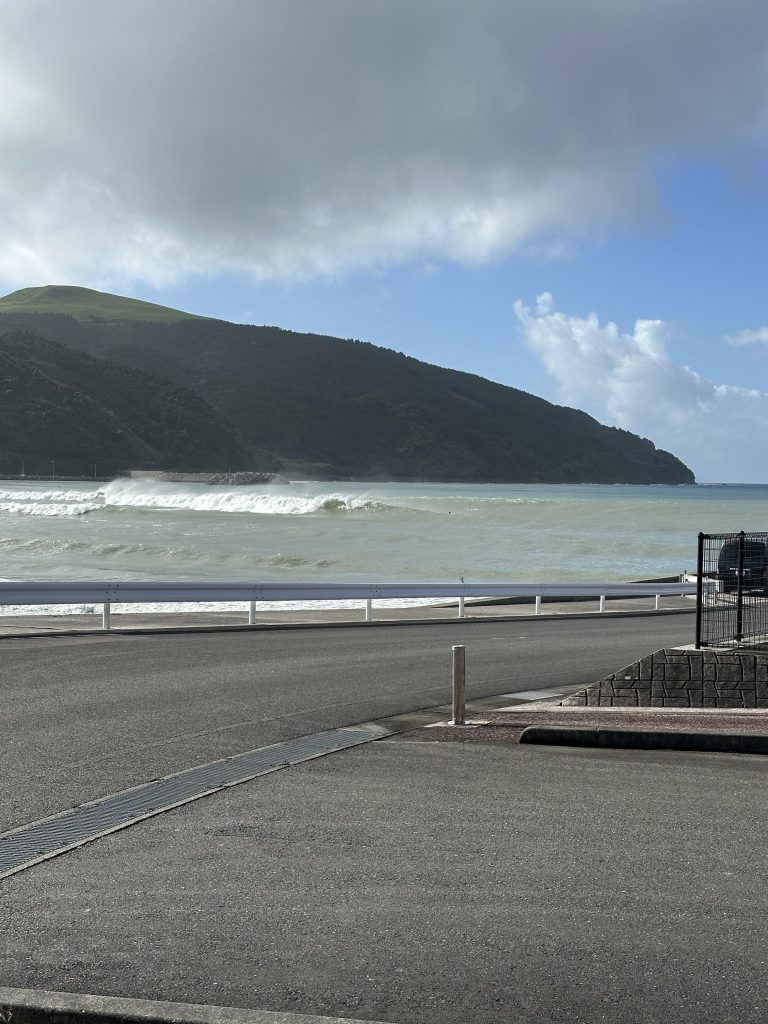
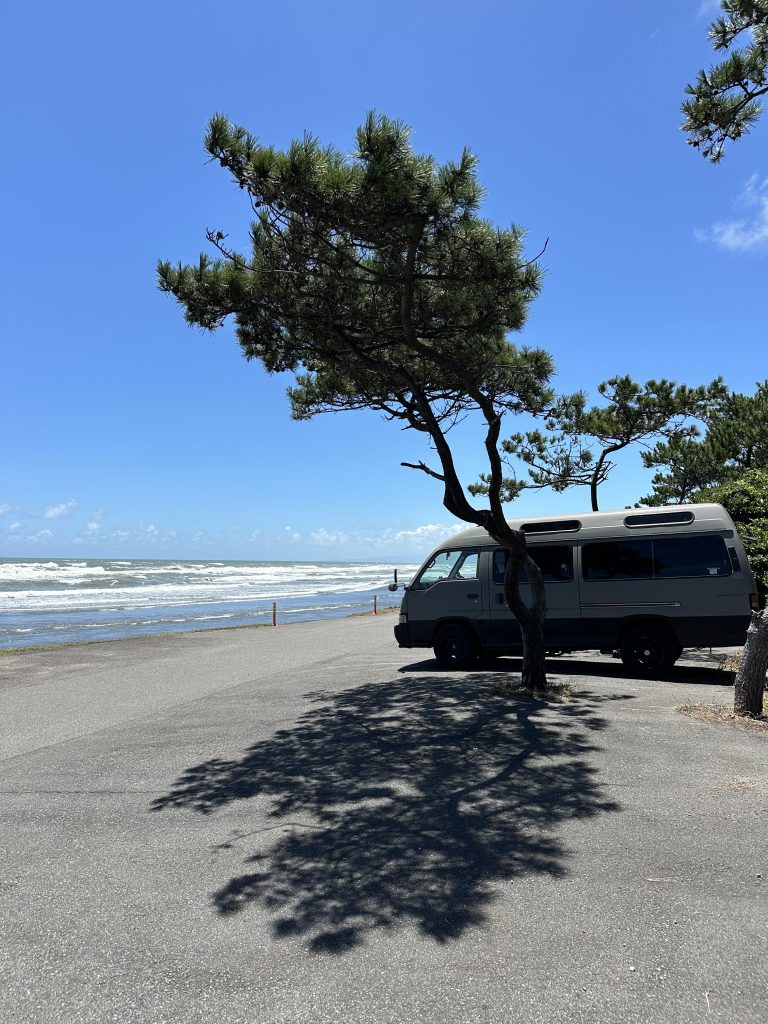
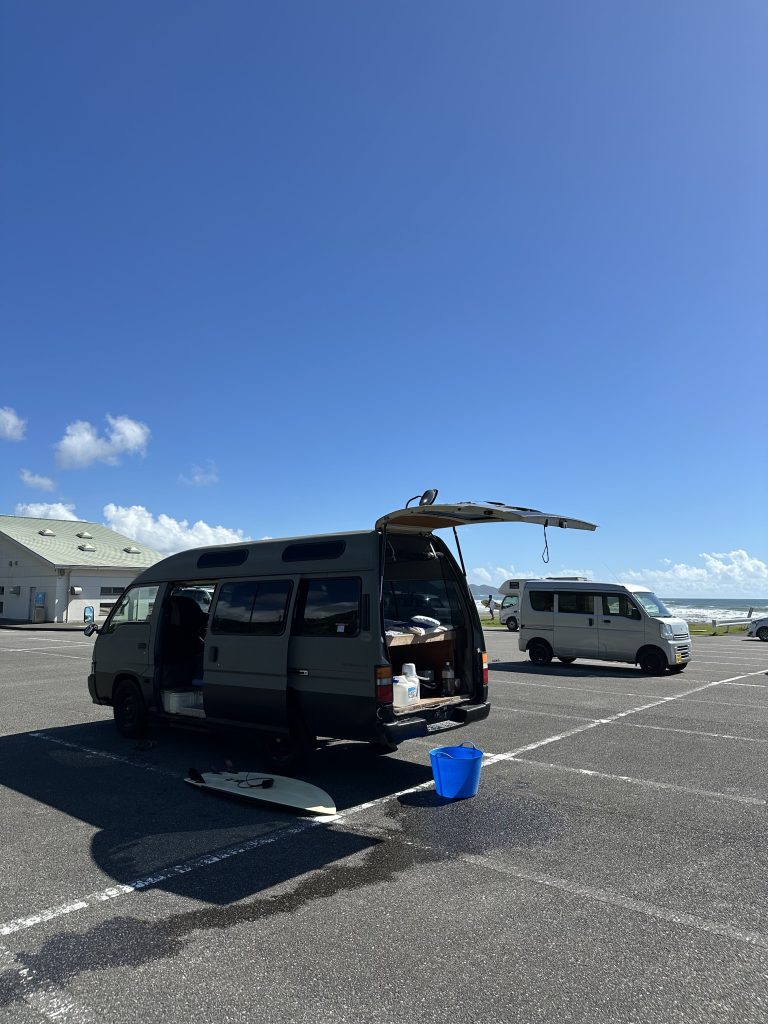
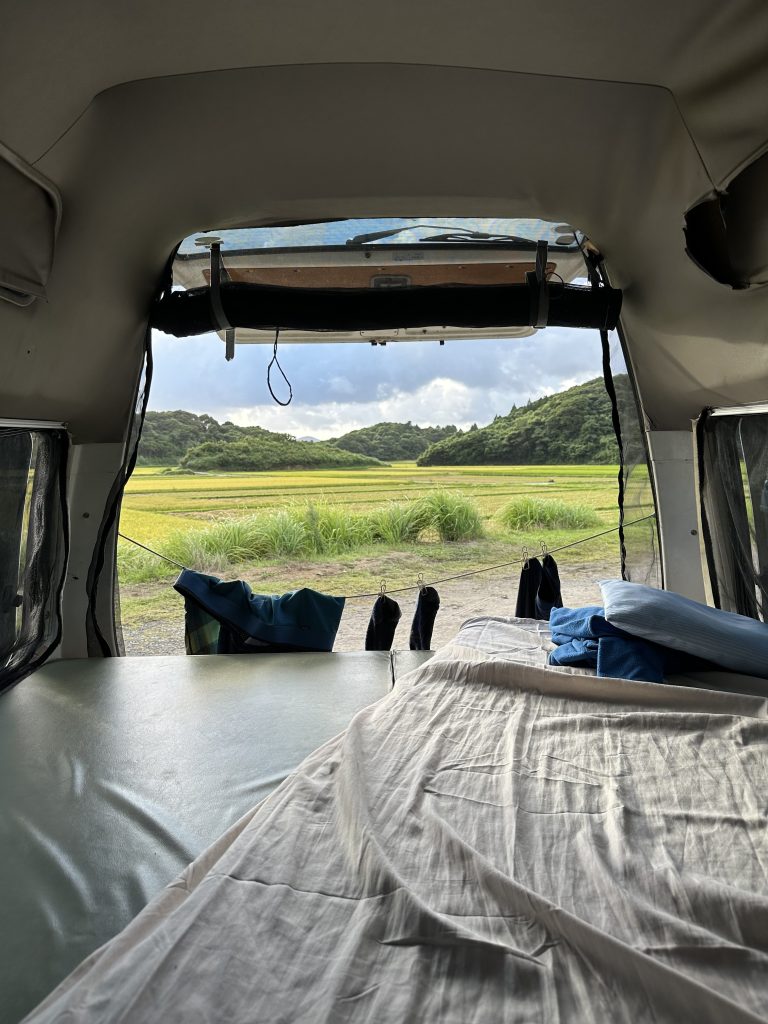
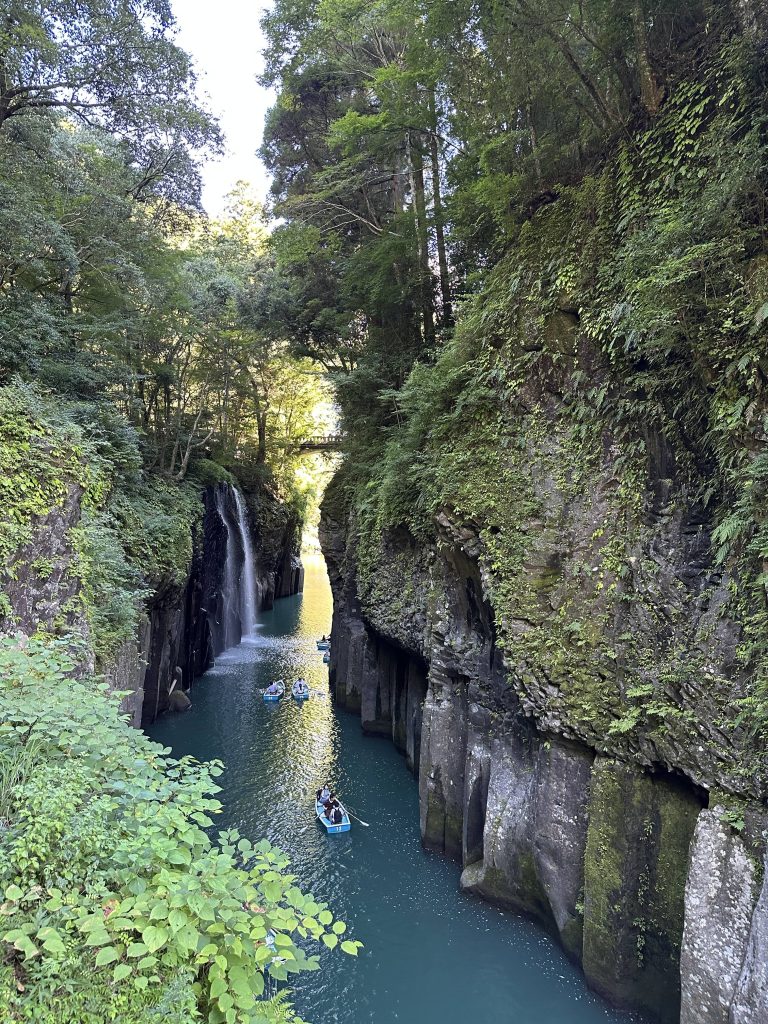
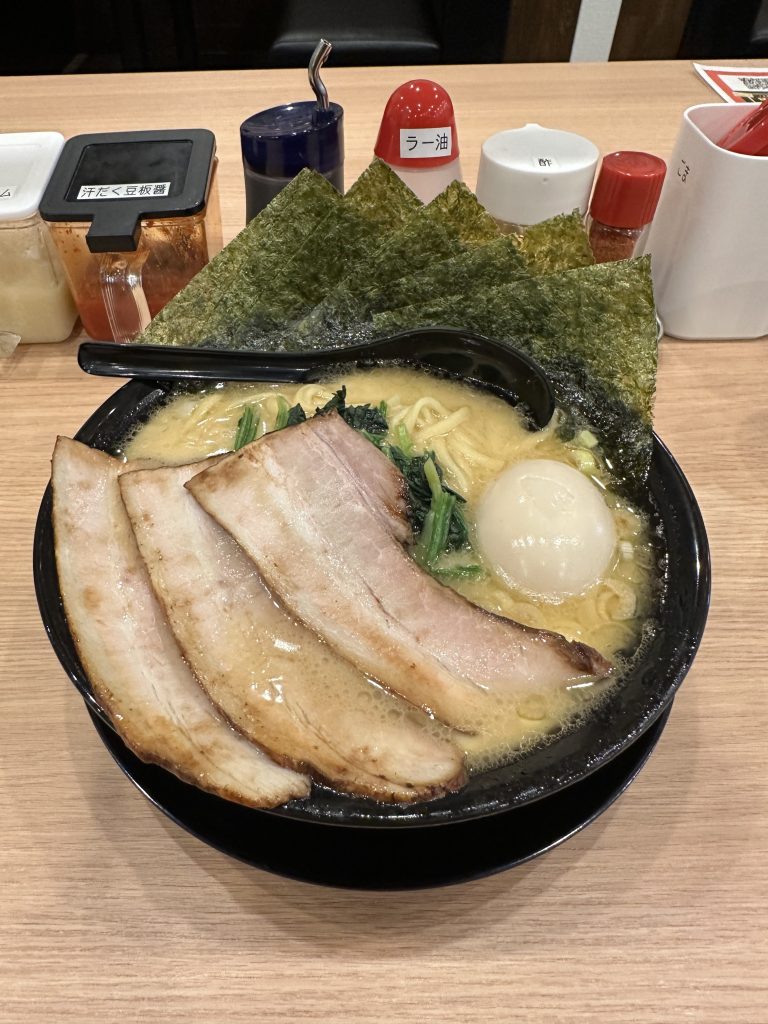
The Van
I chose a van I could sleep in – with a built in bed and screened windows for ventilation.
Wave Quality
Accurately communicating the wave quality of a region is challenging. Even if you look up videos of surfing in Japan you’re only going to get a snapshot from a few random days from random surfers and / or some of the best surf that professionals with local guides have dialed in and selectively edited.
Set your expectations accordingly.
Miyazaki is mostly beach breaks with lower-energy waves. They’re generally soft but peaky and offer short rides (1-3 turn waves).
The Good:
- Beginner to intermediate friendly – you can usually find pockets of smaller or bigger waves to meet your desired level.
- Solo peaks – Long stretches of beach means you can find your own peak if you want to.
- Wide quiver options – You don’t need a specific quiver. Bigger boards are better for this type of surf, but there were plenty of high performance shortboarders in most lineups I surfed and they were getting waves.
- Novel waves – you can find some cool setups like waves breaking on the inside jetty of a rivermouth or near the runway by Miyazaki airport.
- Great scenery – most beaches outside of the city have a beautiful backdrop.
The Bad:
- Dialing in top notch waves – There are some reefs and river mouths that produce amazing waves but they are fickle and may be hard to find… and might be more regulated by locals.
- Paddling out – Energy from typhoons means high wave frequency that can make the paddle out at the beach breaks tough. Watch locals to see how they get out before charging into the surf.
- Water temps – the water quality was fine everywhere I went and the temperature was nice in July. I’ve heard it gets uncomfortably warm later in the season around August and September.
My takeaway: I came to Japan from a 2-month trip in Indonesia where I was surfing powerful swells over shallow reefs. Miyazaki surf is a completely different scene, even when typhoons are pumping in swell. I had fun almost every day and in almost every session, but didn’t get the level of stoke I got from stronger surf in Indo. I wouldn’t return to Japan only for the surf, but considering everything else from the food to the scenery is so enjoyable, I’d definitely do it again if given the choice to go back in time.
Budget
My budget ended up being about $100 USD per day. The biggest expense by far was the van. Everything after that is relatively minor. Here’s a rough breakdown of cost per day:
- Van Rental: $60
- Gas: $10
- Food: $20
- Other Supplies: $10 (I bought a fan, pillow, and sheet for sleeping in the van)
- Onsen / Showers: $3
Van Rental Budgeting Tips
Here’s two options depending on your budget and group size:
- Lower Budget – If you’re solo, you could get a smaller car like a Prius or Element at a lower price and make it work for sleeping. It will also get way better gas mileage.
- Higher Budget – If you’re with multiple people or have a higher budget, consider getting an RV with air conditioning. The Japanese RVs are compact and shouldn’t pose much if any of a challenge for driving or parking.
Food Budgeting Tips
If you want to reduce your food expenses, here are my recommendations:
- Convenience Stores – Japan is famous for its convience stores like Lawson, Family Mart, and 7-11. They’re everywhere and have a great selection of quality food to go. I’d usually have breakfast and lunch via a convenience store and go out to eat for dinner.
- Restaurants – Compared to California, dining out is very reasonably priced in Japan. Miyazaki is even less expensive than bigger cities like Kyoto and Tokyo. There are a lot of options for $8-10 USD that are very good and filling. Here are a few examples:
- A bowl of ramen
- A plate of katsu, curry, and rice
- Set meal of tempura and udon noodles
- Supermarkets – You can find great set meals prepared to go at supermarkets that are fresh and surprisingly high quality, even the sushi. If you stop by in the afternoon or early morning you can get meals marked down by ~30%. Look for the yellow sticker listing the mark down percentage or amount in yen (see pictures below for examples).
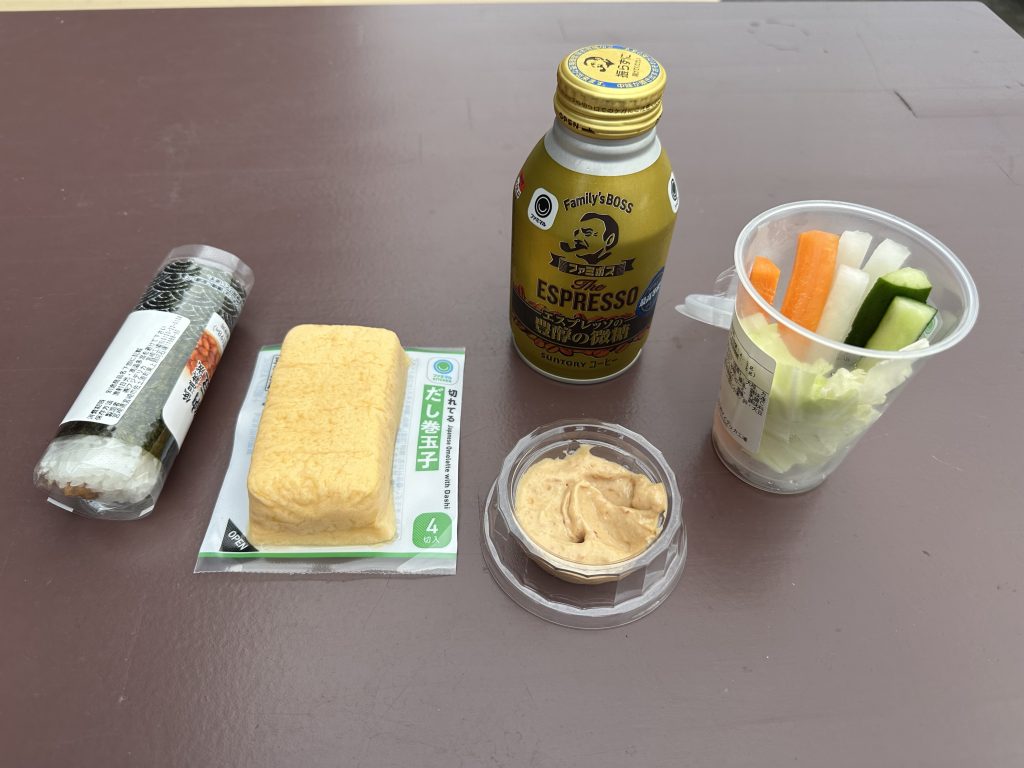
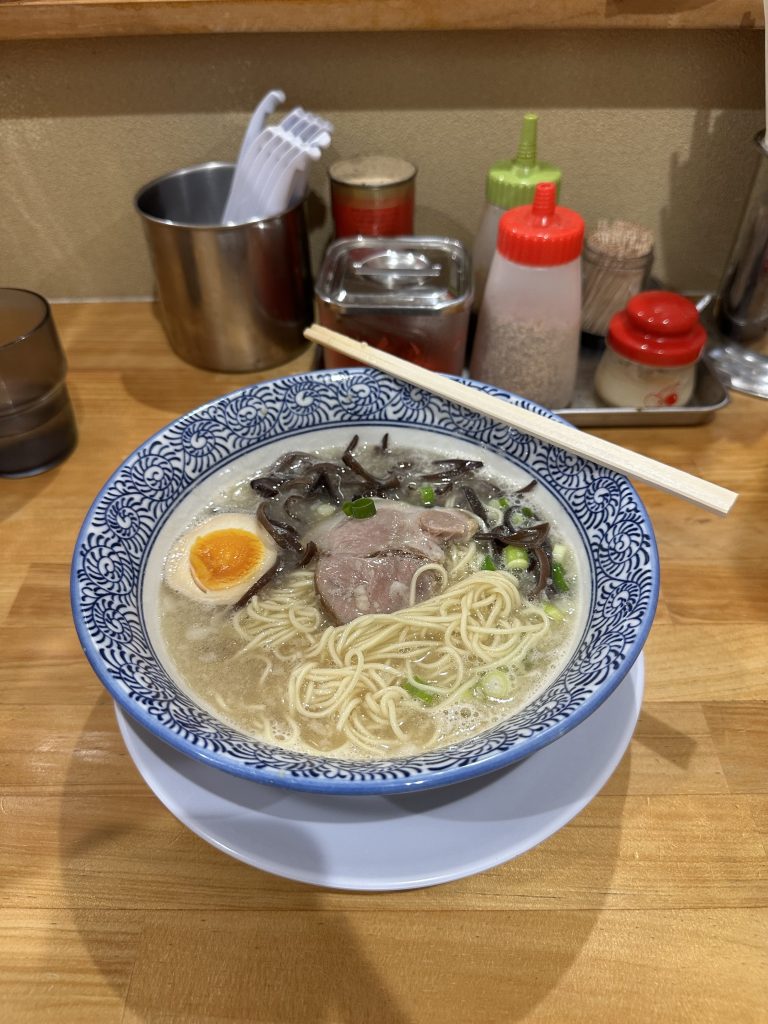
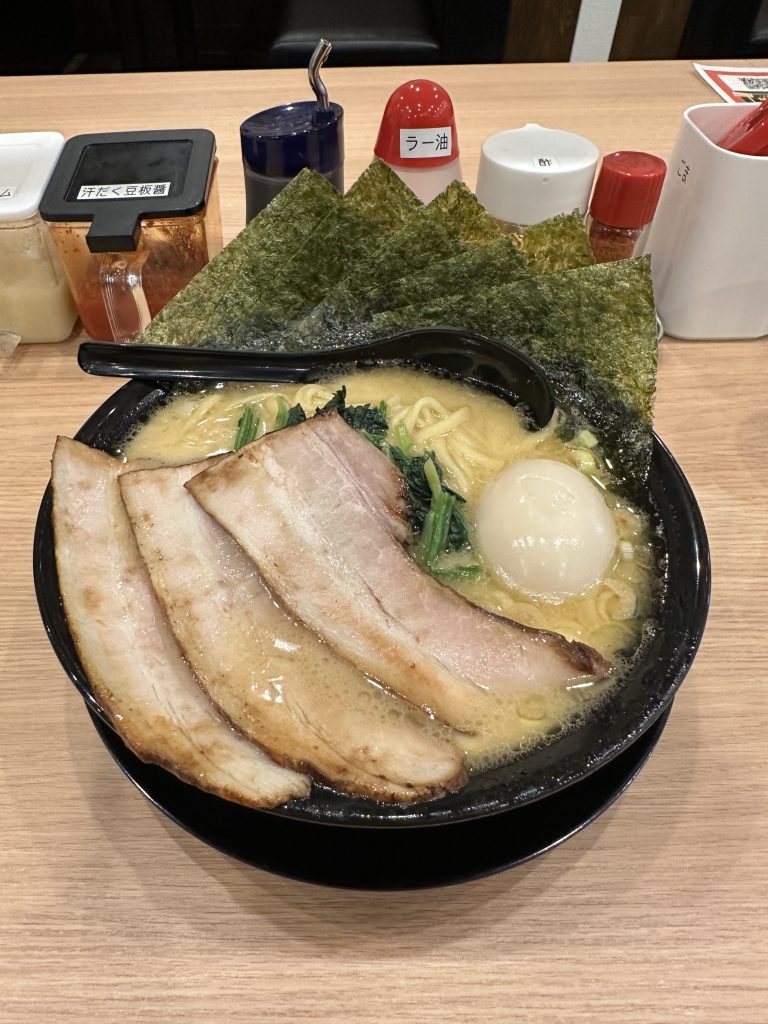
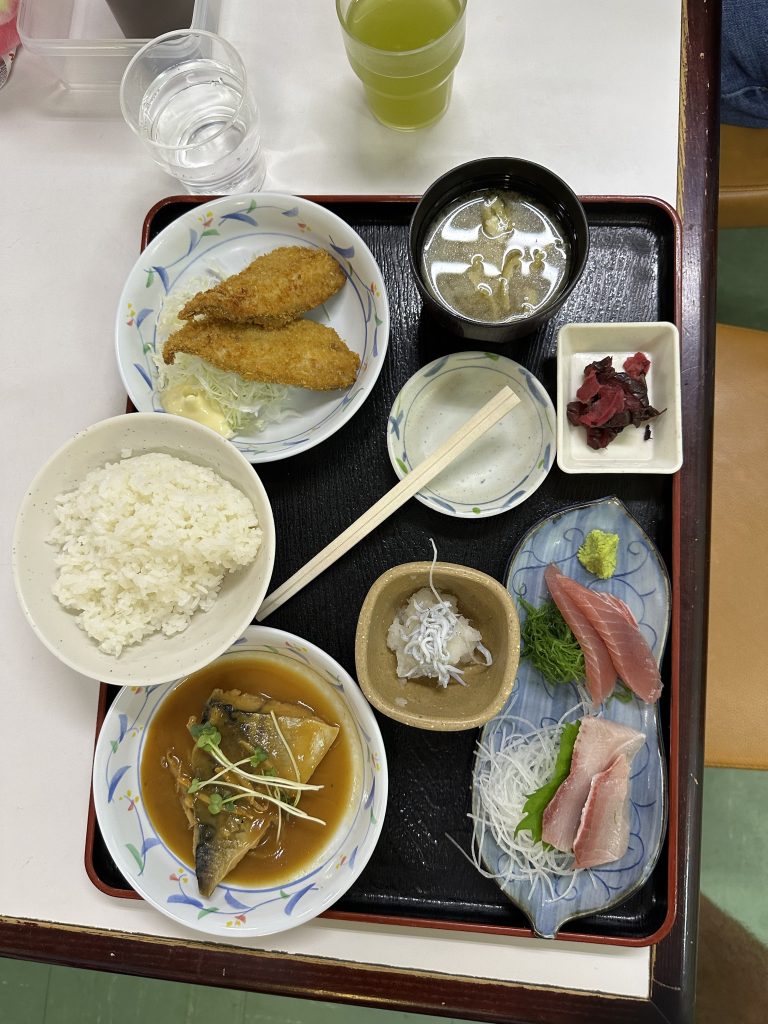
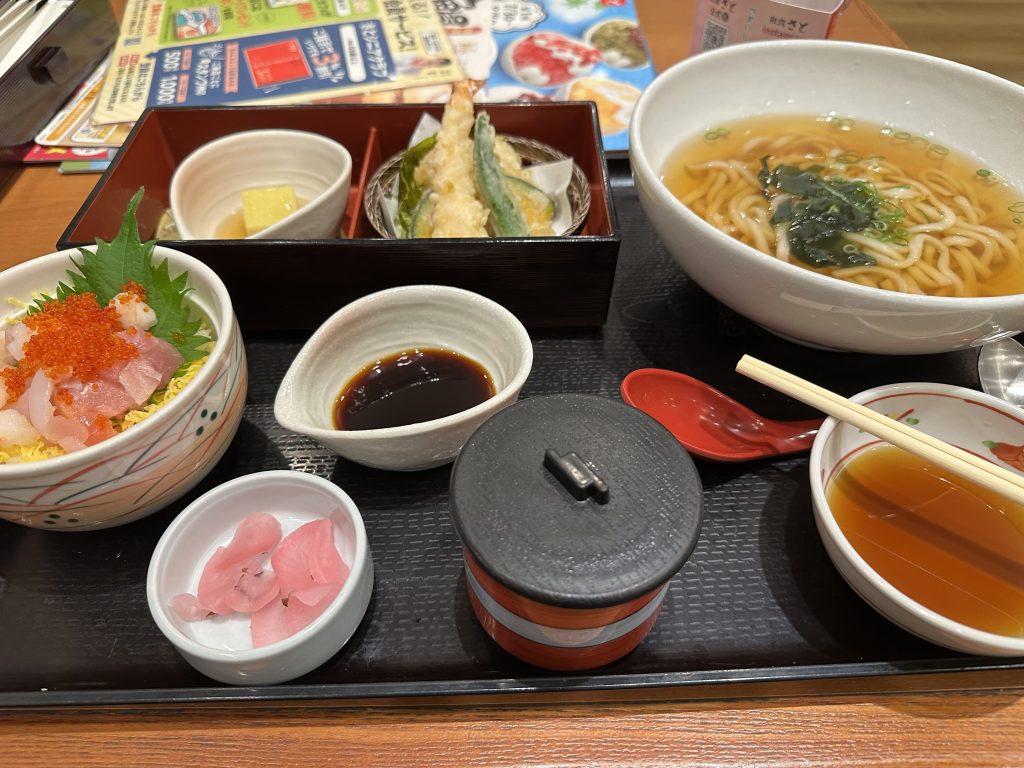
Highlights
Scenery – Given my mobility with the van, I was able to see a big portion of the coast and I was able to get up into the mountains to do a few hikes and see some wonderful Japanese nature. My hikes were close to as good as my best surf sessions.
Surf Quantity – There was almost always somewhere surfable. If I wanted to I could have surfed almost all day on most days. Most of the time I surfed in the morning and evening.
Parking – There was no shortage of places of to park overnight. Most beachside parking lots were open and free. Pullouts on the side of small roads were welcome. I parked overnight in front of an onsen one night, and was told the parking lots outside convenience stores were fair game as well. All free.
Public Resources – Many of the main beaches had bathrooms, water, and some had showers (100 Yen / 70 cents for 5 minutes). They were all clean. They were all open 24hrs. In addition there are several rest stops and convenience stores along the main roads. Finding a bathroom was never an issue.
Water – The tap water in Japan is potable. I only found one place in a mountain parking lot bathroom that wasn’t and it was clearly labeled in Japanese and English “Do Not Drink”. Many beach areas have taps for you to refill water jugs.
Onsens / Public Bath – I hit several onsens for showering and relaxation. Most are around $5 USD, have hot tubs, saunas, and showers. You can find them easily by searching for “onsen” or “public bath” on Google Maps. Take your own towel – one full size and one hand towel is recommended. You can always rent a towel if you don’t take your own.
Challenges
Weather – The heat was a big consideration in my daily planning. Mornings and evenings were comfortable but on most days the mid-day sun was too hot to handle. I’d find refuge in a coffee shop during the peak hours of the day when I wasn’t in the mountains where it was much cooler. I had rain the first few days, which was only a problem when I wanted to keep the van windows open at night but water was getting in.
Sleeping – Nights were a little too warm for me to sleep comfortably. My van had screens so I could catch a breeze without letting mosquitos in but most nights it wasn’t enough. Getting a fan helped, but my sleep on the nights when I was at sea level weren’t great. On the nights I parked up in the mountains I slept great.
Garbage – There are almost zero public trash cans in Japan, so I had to be strategic about the refuse I created and where I disposed of it. After a few days I realized that most Family Marts have trashcans outside, so this is where I unloaded most days. Other convenience stores have trashcans as well, but they are inside, so it’s a little less awkward if you buy something when you go in and / or dispose of small amounts of your trash at a time. Keep your trash separated Japanese style for easier offloading into the appropriate bins:
- Bottles and Cans
- Plastics (food containers, lids, etc.)
- Combustibles (papers, chopsticks, wrappers, etc.)
Tips & Recommendations
The biggest factor is catching a typhoon swell, so timing is important. Japan can go multiple weeks with low to no swell activity. When I’m on a surf trip, everything else can be mitigated… but here some additional tips to help in those areas too.
Timing
I had the luxury of being able to wait in the Tokyo area for a typhoon to develop, then fly down to start my Miyazaki trip once I saw the conditions were right. If you don’t have this level of flexibility in your trip, set your expectations ahead of time knowing that the week or two you pick in Miyazaki it might be longboard-only sized waves if there’s no typhoon.
Swell: Almost all decent swells in Miyazaki come from typhoons that form off the coast in the Pacific Ocean during the summer months when waters are warmer. July through October is the typhoon season.
For Forecasting: How to Forecast for Japanese Typhoon Surf
Water Temps: The water is trunkable; Maybe a spring suit or top is needed if you’re on the shoulder of the season and surfing in the wind.
Air Temps: Hot and humid. If you’re renting a van, you’ll be much more comfortable with something that has airflow
Van Rental
Unlike everything else in Japan, the van rental was informal and below my expectations. The van was in worse shape than the pictures – mostly the window screens which were falling off and the rusty sliding door which was hard to close.
Charges – Surfers Rentacar, which has a large selection of vehicles designed for surfers, charges by the day, not by the typical 24hr cycle like most car rentals. So when renting it for a 7 day period I was charged for 8 days (the first day pickup at noon cost one full day). They also did not give me the option to defer the “recommended” insurance, which further added to the cost.
Van Extras – My van came with some basic supplies including a changing tub, water tank, and camping air mattress. You can pay extra for a cooking set. I recommend budgeting in some extra money for 1-2 fans, a pillow, and sheets if you’re going to be sleeping in the van. You can get all of this and more from a Daison or similar store in Miyazaki city.
Gasoline – Note that the older model vans will be guzzling more gas than the newer cars. My van was from 1978 and the gas required was higher that what I initially expected. The hybrids I’ve rented for other outings in Japan are incredibly fuel efficient.
Other
Driving – I didn’t have any issues driving. I saw almost no police and had no issues with traffic. Miyazaki driving is generally mellow.
Speaking Japanese – A little bit goes a long way. I highly recommend learning the top 10-20 basic phrases before your trip. One of the best moments in my trip was meeting the owner of a tiny ramen shop in the mountains. I was the only one in her half home half ramen shop. Using a few simple phrases I had picked up we were able to communicate and she hooked me up with a breakfast to go and a bunch of Japanese snacks.
Researching in Advance – I’m a generally lazy researcher when it comes to travel, particularly outside of surfing. The trails and sights away from the beach that I managed to research in my downtime were some of the coolest things I’ve seen in Japan. They were off the tourist track and just as amazing or even better than the top attractions provided by Chat GPT and listicles from travel blogs. A little extra research goes a long way.
